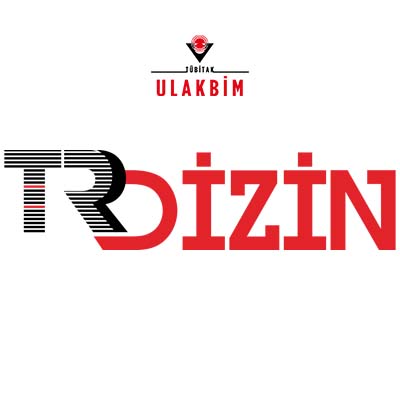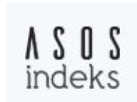İlkokul Öğrencilerinin Bilgi Verici Resimli Çocuk Kitaplarına Yönelik Tepkileri (Elementary School Students' Responses to Informative Picture Books)
Anahtar Kelimeler:
Okur tepki teorisi- bilgilendirici metinler- ilkokul öğrencileri- resimli kitaplarÖzet
Okuma, yazar, metin ve okuyucu arasında gerçekleşen bir anlam kurma sürecidir. Bu süreçte metin ve okur arasında gerçekleşen etkileşim okurun ön bilgilerine, deneyimlerine, ilgilerine dayalıdır. Öğrencilerin metinlere yönelik verdikleri tepkiler onların bilgi düzeyleri, düşünme becerileri, bilişsel ve sosyal gelişimleri hakkında eğitimcilere ve kitap yazarlarına önemli veriler sağlayabilir. Hem ders kitaplarında hem de ticari amaçlarla satılan kitaplarda bulunan hikâye edici ve bilgi verici türdeki metinler öğrenciler için anlamlı olmalı ve onlara okuma zevki verebilecek kalitede yazılmalı ve resimlendirilmelidir. Bu araştırmanın amacı ilkokul 4.sınıf öğrencilerinin bilgi verici resimli çocuk kitaplarına yönelik tepkilerini belirlemektir. Araştırma nitel araştırma desenlerinden durum çalışması şeklinde tasarlanmış ve çalışma grubunu amaçlı örneklem yöntemi ile seçilen 105 ilkokul öğrencisi oluşturmuştur. Araştırmada veri toplama aracı olarak 5N 1K sorularından oluşan ve öğrencilerin sözlü- yazılı tepkilerini almak üzere araştırmacılar tarafından hazırlanan yönergeler ve anlama testleri kullanılmıştır. Veri toplama sürecinde öncelikle öğrencilerle bilgi verici kitaplar paylaşılmış, ardından öğrencilerden kitaplarla ilgili soruları cevaplamaları istenmiş ve verdikleri cevaplar betimsel olarak analiz edilmiştir. Verilerin analizi sonucunda, öğrencilerin kitaplara yönelik tepkilerinin daha çok okur merkezli olduğu sonucuna ulaşılmıştır.
Referanslar
Akyol, H., Yıldırım, K., Ateş, S. ve Çetinkaya, Ç. (2013). Anlamaya yönelik nasıl sorular soruyoruz? Mersin Üniversitesi Eğitim Fakültesi Dergisi, 9(1).41-56.
Aylanç, M. (2012). Türkçe öğretmeni adaylarının özel öğretim yöntemleri dersi uygulamalarında karşılaştıkları sorunlar: bilgilendirici ve öğretici metinler örneği. Selçuk Üniversitesi Türkiyat Araştırmaları Dergisi, 1(31), 333-350.
Beach, R. (1993). A Teacher's introduction to reader-response theories. NCTE Teacher's Introduction Series. National Council of Teachers of English, 1111 W. Kenyon Road, Urbana, IL 61801-1096. 1-25.
Chase, N. D. ve Hynd, C. R. (1987). Reader response: An alternative way to teach students to think about text. Journal of Reading, 30(6), 530-540.
Connell, J. (1996). Assessing the influence of Dewey's epistemology on Rosenblatt's reader response theory. Educational Theory, 46(4), 395-413.
Dedeoğlu, H., ve Ulusoy, M. (2013). Sınıf öğretmeni adaylarının okuma tutumları. Okuma Yazma Eğitimi Araştırmaları, 1(2), 80-88.
Dedeoğlu, H., Ulusoy, M., ve Alıcı, M. (2013). Çocuklar için hazırlanmış biyografik eserler üzerine bir içerik analizi. Hacettepe Üniversitesi Eğitim Fakültesi Dergisi, 28(2), 116- 131.
Dias, P. (1990). Literary reading and classroom constraints: aligning practice with theory. Center for the Learning and Teaching of Literature, Albany, New York, Report Series 5(2), 1-25.
Hancock, M. R. (2008). A celebration of literature and response: children, books, and teachers in K-8 classrooms (3rd. ed.). Upper Saddle River, New Jersey: Pearson.
Heller, M. F. (2006). Telling stories and talking facts: first graders' engagements in a nonfiction book club. The Reading Teacher, 60(4), 358-369.
Huck, C. S., Kiefer, B. Z., Hepler, S. ve Hickman, J. (2004). Children’s literature in the elementary school (8th ed.). NY: Mc Graw Hill.
Kelly, P. ve Farnan, N. (1989). Effects of a reader response approach on students’ ways of thinking about text. Conference Report at the Annual Meeting of the National Reading Conference, 1-14.
Lehman, B. A., ve Scharer, P. L. (1995). Teachers' perspectives on response comparisons when children and adults read children's literature. Literacy Research and Instruction, 35(2), 142-152.
Molinelli, P. M. (1995). The significance of stance: an invitation to aesthetic response. Publication Type: Opinion Papers; Speeches/Meeting Papers. 1-41. 10 Nisan 2017 tarihinde http://files.eric.ed.gov/fulltext/ED404615.pdf sayfasından erişilmiştir.
McKay, J. (2006). Intertextuality and social construction of meaning. Unpublished doctoral dissertation, University Oklahoma, Oklahoma.
Paker, T. (2015). Durum çalışması. F.N. Seggie ve Y. Bayyurt (Edt.) Nitel araştırma yöntem, teknik, analiz ve yaklaşımları içinde (s. 119-135). Ankara: Anı.
Rosenblatt, L. M. (1994). The reader, the text, the poem: The transactional theory of the literary work. Carbondale: Southern Illinois University Press.
Rosenblatt, L. M. (1988). Writing and reading: the transactional theory. Center for the Study of Reading, Technical Report, New York University No: 416, 1-20.
Trousdale, A. M., ve McMillan, S. (2003). Cinderella was a wuss: A young girl's responses to feminist and patriarchal folktales. Children's Literature in Education, 34(1), 1-28.
Şahin, G. (2014). Okul öncesi dönem çocuk kitaplarında görsel bir uyaran olarak resim.Electronic Turkish Studies, 9(3), 1309-1324.
Ulusoy, M. (2016). Resimli çocuk kitapları ve okur-tepki teorisi. İlköğretim Online, 15(2), 487- 497.
Yıldırım, A. ve Şimşek, H. (2011). Sosyal bilimlerde nitel araştırma yöntemleri. Ankara:Seçkin Yayıncılık.
Wollman-Bonilla, J. ve Werchadlo, B. (1995). Literature response journals in a first-grade classroom. Language Arts, 72, 562-570.
Yayınlanmış
Nasıl Atıf Yapılır
Sayı
Bölüm
Lisans
Telif Hakkı (c) 2023 Anadolu Kültürel Araştırmalar Dergisi (ANKAD)

Bu çalışma Creative Commons Attribution-NonCommercial 4.0 International License ile lisanslanmıştır.













